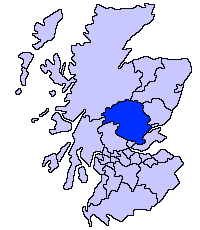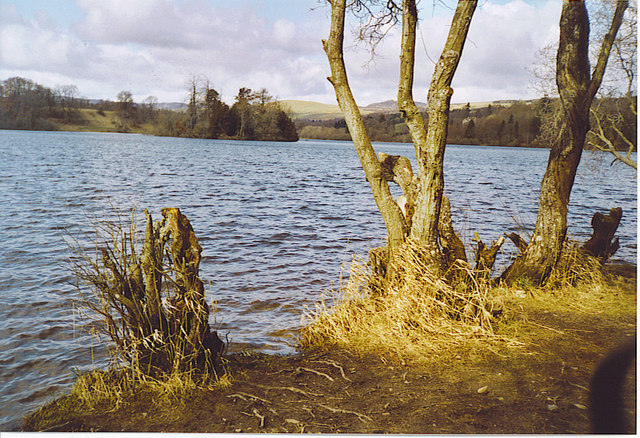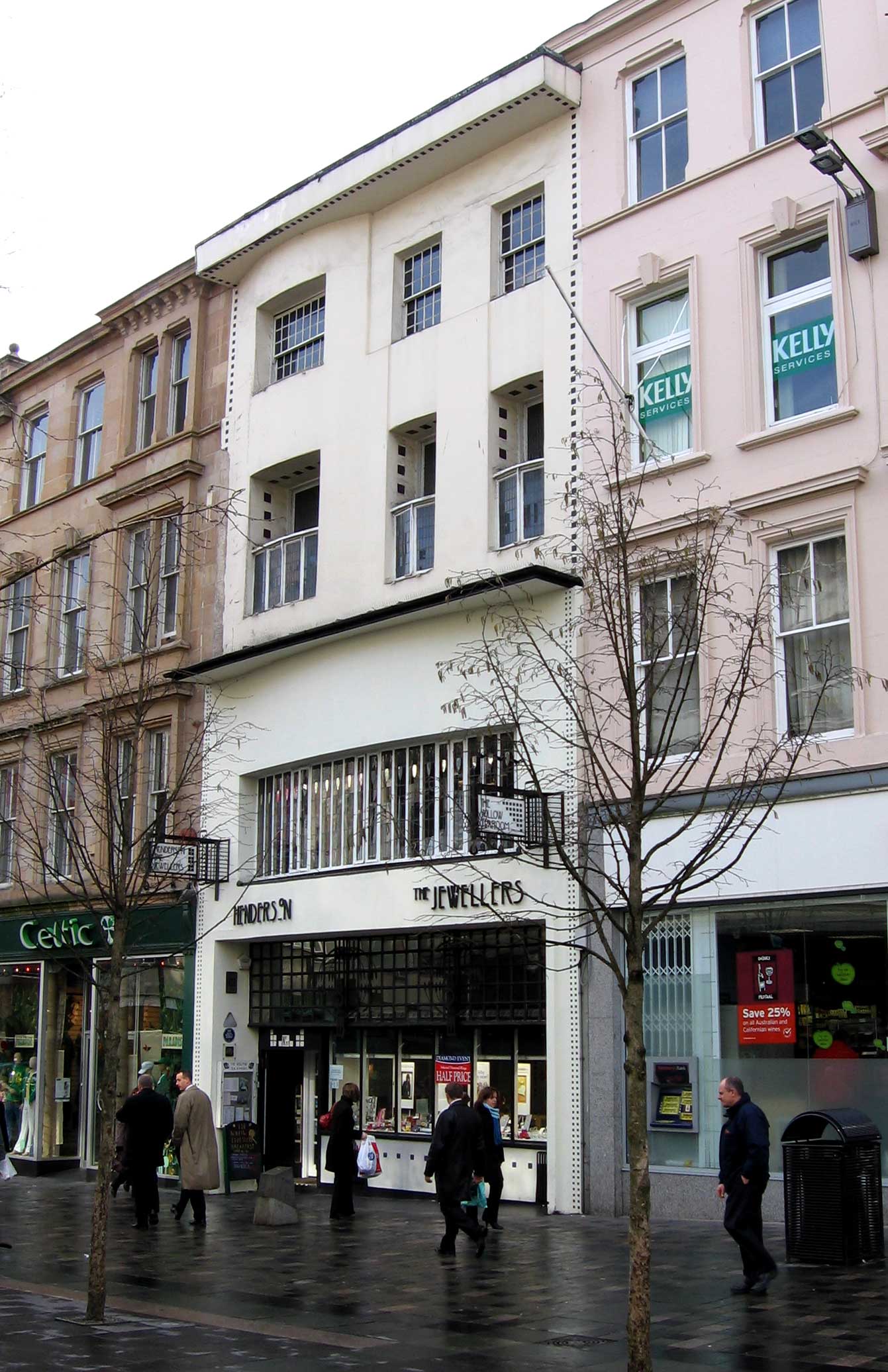|
List Of Category A Listed Buildings In Perth And Kinross
This is a list of Category A listed buildings in Perth and Kinross, Scotland. In Scotland, the term listed building refers to a building or other structure officially designated as being of "special architectural or historic interest". Category A structures are those considered to be "buildings of national or international importance, either architectural or historic, or fine little-altered examples of some particular period, style or building type." Listing was begun by a provision in the Town and Country Planning (Scotland) Act 1947, and the current legislative basis for listing is the Planning (Listed Buildings and Conservation Areas) (Scotland) Act 1997. The authority for listing rests with Historic Scotland, an executive agency of the Scottish Government, which inherited this role from the Scottish Development Department in 1991. Once listed, severe restrictions are imposed on the modifications allowed to a building's structure or its fittings. Listed building consent ... [...More Info...] [...Related Items...] OR: [Wikipedia] [Google] [Baidu] |
Craigie (hamlet), Perth And Kinross
Craigie is a village west of Blairgowrie, in Perth and Kinross, Scotland. It is situated on the eastern side of Loch Clunie. Robert Moray, the first President of the Royal Society The president of the Royal Society (PRS) is the elected Head of the Royal Society of London who presides over meetings of the society's council. After informal meetings at Gresham College, the Royal Society was officially founded on 28 November ..., was the elder of two sons of Sir Mungo Moray of Craigie. References Villages in Perth and Kinross {{PerthKinross-geo-stub ... [...More Info...] [...Related Items...] OR: [Wikipedia] [Google] [Baidu] |
Glenfarg
Glenfarg (Scottish Gaelic: Gleann Fairg) is a village in the Ochil Hills in Perth and Kinross, Scotland. Until 14 June 1964, the village had a railway station, Glenfarg railway station, on the main line between Perth and Edinburgh via Kinross. Although not recommended for closure under the Beeching Axe, the line nevertheless closed to passengers and freight on 5 January 1970, resulting in slower passenger services to Perth via longer routes. The former railway line is now the route of the M90 motorway, which runs along the eastern periphery of the village. At its peak, the village became a popular holiday destination, boasting 4 hotels. Services in the village include a church, small shop, tennis courts, riding school and a primary school with nursery. The 2008 construction work at Glenfarg Water Treatment Works won the accolade of "Most Considerate Site" at the 2009 Considerate Contractors Awards. The award was presented to the Black & Veatch Site Manager George Smart and the Scott ... [...More Info...] [...Related Items...] OR: [Wikipedia] [Google] [Baidu] |
Ochil Hills
The Ochil Hills (; gd, Monadh Ochail is a range of hills in Scotland north of the Forth valley bordered by the towns of Stirling, Alloa, Kinross, Auchterarder and Perth. The only major roads crossing the hills pass through Glen Devon/ Glen Eagles and Glenfarg, the latter now largely replaced except for local traffic by the M90 Edinburgh-Perth motorway cutting through the eastern foothills. The hills are part of a Devonian lava extrusion whose appearance today is largely due to the Ochil Fault which results in the southern face of the hills forming an escarpment. The plateau is undulating with no prominent peak, the highest point being Ben Cleuch at . The south-flowing burns have cut deep ravines including Dollar Glen, Silver Glen and Alva Glen, often only passable with the aid of wooden walkways. The extent of the Ochils is not well-defined but by some definitions continues to include the hills of north Fife. Historically, the hills, combined with the town's site at th ... [...More Info...] [...Related Items...] OR: [Wikipedia] [Google] [Baidu] |
Balvaird Castle
Balvaird Castle in Perthshire is a traditional late medieval Scottish tower house. It is located in the Ochil Hills, around south of Abernethy. The name Balvaird is from ''Baile a' Bhàird'', 'Township of the Bard' in Gaelic. Balvaird Castle is a scheduled monument, and is in the care of Historic Environment Scotland. The spelling of its name has many variations, including Balverd, Balverde, Balward, Balwaird and Baleward. Origins Balvaird was built around the year 1495 for Sir Andrew Murray, a younger son of the family of Murray of Tullibardine. He acquired the lands of Balvaird through marriage to the heiress Margaret Barclay, a member of a wealthy family and daughter of James Barclay of Kippo. It is likely that Balvaird Castle was built on the site of an earlier Barclay family castle. Substantial remnants of earthwork fortifications around the Castle may survive from earlier defences. Balvaird is first mentioned in the written historical record in 1498 as 'the place of Balwar ... [...More Info...] [...Related Items...] OR: [Wikipedia] [Google] [Baidu] |
Aberargie
Aberargie ( gd, Obar Fhargaidh) is a village in the south eastern region of Perth and Kinross. It lies on the western edge of the old Abernethy Parish on the banks of the River Farg, from which it derives its name. Aberargie is around west of Abernethy, and southeast of Bridge of Earn. Origin and History Aberargie is recorded in the Pictish Chronicle as part of Nechtan's land grant in 460AD, and may have been in existence for much longer. Aberargies' place in most history books is as a small part of the bigger Parish of Abernethy, but there was at one time a thriving community, based on the utilisation of the River Farg to power water mills for various purposes from sawing timber to the milling of flax and meal. Mills have been recorded at Pottie, part of which still stands at the bottom of the Farg Glen, Ayton Farm, Mill House, Willow Bank, which also has some standing ruins, and Gowlie. The feu duty for most of these mills up until the late 19th century was payable to B ... [...More Info...] [...Related Items...] OR: [Wikipedia] [Google] [Baidu] |
Balmanno Castle
Balmanno Castle is a moated tower house located in Perthshire hamlet of Dron, Scotland. It was built between 1570 and 1580. It is now modernised and is in good condition. The moat is still partially filled with water. It was built for George Auchinleck, after acquiring the estate. The house is a Category A listed building and the grounds are included in the Inventory of Gardens and Designed Landscapes in Scotland. History The castle was built as an L-plan tower house in c.1570 for George Auchinleck. The celebrated Scots architect Sir Robert Lorimer undertook a major restoration in 1915 for William Millar, a Glasgow ship-owner, as his summer residence. Lorimer's work was of immense quality and undertaken with great care. Externally he added extra wings to form a courtyard. Lorimer allowed himself to dabble in the Gothic, while incorporating internal details from Holyrood Palace whose restoration was the work of Sir William Bruce (1630 - 1710). Lorimer also furnished the house in ... [...More Info...] [...Related Items...] OR: [Wikipedia] [Google] [Baidu] |
Charles Rennie Mackintosh
Charles Rennie Mackintosh (7 June 1868 – 10 December 1928) was a Scottish architect, designer, water colourist and artist. His artistic approach had much in common with European Symbolism. His work, alongside that of his wife Margaret Macdonald, was influential on European design movements such as Art Nouveau and Secessionism and praised by great modernists such as Josef Hoffmann. Mackintosh was born in Glasgow and died in London. He is among the most important figures of Modern Style (British Art Nouveau style). Early life and education Charles Rennie Mackintosh was born at 70 Parson Street, Townhead, Glasgow, on 7 June 1868, the fourth of eleven children and second son of William McIntosh, a superintendent and chief clerk of the City of Glasgow Police. He attended Reid's Public School and the Allan Glen's Institution from 1880 to 1883. William's wife Margaret Mackintosh née 'Rennie' grew up in the Townhead and Dennistoun (Firpark Terrace) areas of Glasgow. Name He cha ... [...More Info...] [...Related Items...] OR: [Wikipedia] [Google] [Baidu] |
1 Dunira Street
1 Dunira Street is an historic building in Comrie, Perth and Kinross, Scotland. It is a Category A listed building dating to 1904. Its architect was Charles Rennie Mackintosh, as part of Honeyman, Keppie and Mackintosh. A corner building, its prominent feature is its angle turret. As of 1971, its original shop fittings were still in place. See also *List of Category A listed buildings in Perth and Kinross This is a list of Category A listed buildings in Perth and Kinross, Scotland. In Scotland, the term listed building refers to a building or other structure officially designated as being of "special architectural or historic interest". Cate ... References {{DEFAULTSORT:Dunira Street, 1 Category A listed buildings in Perth and Kinross 1904 establishments in Scotland ... [...More Info...] [...Related Items...] OR: [Wikipedia] [Google] [Baidu] |
Comrie, Perth And Kinross
Comrie (; Gaelic: ''Cuimridh''; Pictish: ''Aberlednock''; Latin: ''Victoria'') is a village and parish in the southern Highlands of Scotland, towards the western end of the Strathearn district of Perth and Kinross, west of Crieff. Comrie is a historic conservation village in a national scenic area along the river Earn. Its position on the Highland Boundary Fault explains why it has more earth tremors than anywhere else in Britain. The parish is twinned with Carleton Place, Ontario, Canada. Location and etymology Comrie lies within the registration county of Perthshire (Gaelic: '' Siorrachd Pheairt'') and the Perth and Kinross local council area. The name Comrie derives from the original Gaelic name ''con-ruith'' or ''comh-ruith'' (from ''con/comh'' 'together', and ''ruith'' "to run", "running") translating literally as "running together", but more accurately as "flowing together" or "the place where rivers meet". In modern Gaelic the name is more often transcribed as Comraidh, ... [...More Info...] [...Related Items...] OR: [Wikipedia] [Google] [Baidu] |
Strathearn
Strathearn or Strath Earn (, from gd, Srath Èireann) is the strath of the River Earn, in Scotland, extending from Loch Earn in the West to the River Tay in the east.http://www.strathearn.com/st_where.htm Derivation of name Strathearn was one of the original provinces of the Kingdom of Alba, and was led by a mormaer and then an Earl. The province was bounded on the north by Atholl, north west by Breadalbane, south west by Menteith, south east by Fife, and on the east by '' Perthia''. History The earliest attested mormaer of Strathearn is Mael Ísu I, who is recorded fighting alongside David I at the Battle of the Standard in 1138. Unlike some provinces where the holder of the office of mormaer rotated between kin-groups, the mormaership of Strathearn was dominated by a single family, with a Mael Ísu in every generation until the death of Mael Ísu V in the mid 14th century. In medieval times, Strathearn was part of the region administered by the sheriff based at Perth. ... [...More Info...] [...Related Items...] OR: [Wikipedia] [Google] [Baidu] |
Aberuchill Castle
Aberuchill Castle is located west of Comrie in Perthshire, Scotland. It comprises an early 17th-century tower house, which was extended and remodelled in the 19th century. The house, excluding the later west wing, is protected as a category A listed building, while the grounds are included in the Inventory of Gardens and Designed Landscapes in Scotland. History In 1596 the lands of Aberuchill were granted to the Campbell family of Lawers. The earliest part of the tower house is dated 1602. In 1642 Aberuchill was acquired by Sir James Drummond, and was retained by his descendants until 1858. The gothic east wing was added to the tower house by the Drummonds, and the interiors remodelled, in the early 19th century. The house was purchased by Sir David Dundas of Dunira in 1858, who sold it on to English cotton merchant George Dewhurst of Lymm Lymm is a village and civil parish in the Borough of Warrington, Cheshire, England, which incorporates the hamlets of Booths Hill, Broome ... [...More Info...] [...Related Items...] OR: [Wikipedia] [Google] [Baidu] |






